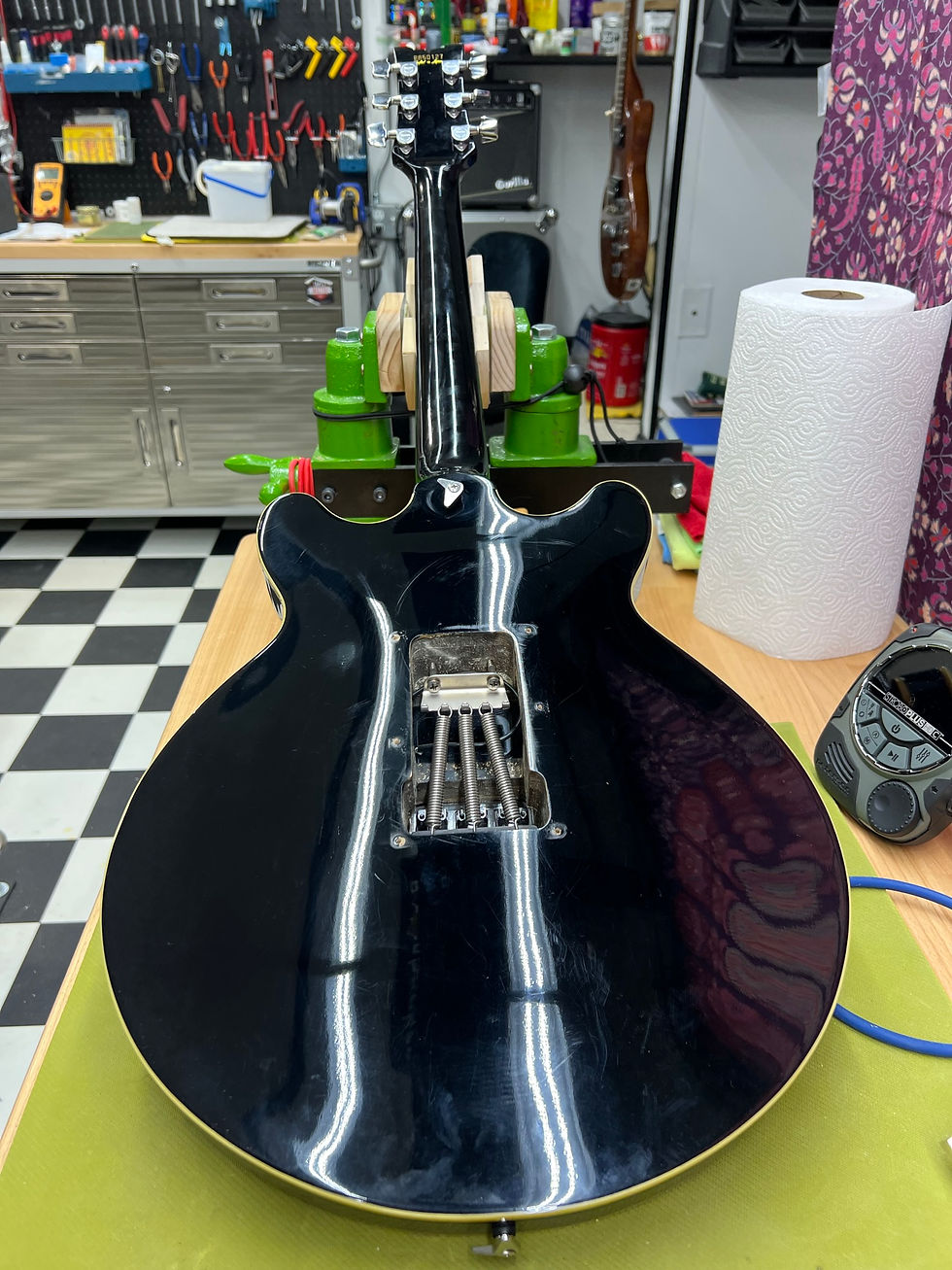
I had the unique opportunity to work on this beauty back in the dry days of Fall 2022. There weren't many of these produced, as the flavor of the day in the mid 1980s were solid body guitars (moving away from archtop and hollow body designs that were popular in the 50s and 60s). These guitars were made in Japan in the FujiGen factory, and featured top, back and sides made of laminated birch and a one piece maple neck with a 12"radius rosewood fingerboard. Deviating from the Artstar series it also sported the Ibanez Pro Rock'r tremolo in place of the usual fixed bridge designs of the line.

I began this job by removing the strings to have a closer look at the frets and fingerboard. A tiny bit of wear has taken place in the first few positions of the fretboard, indicative of long fingernails digging in and gradually wearing channels parallel to the top of the string path. Not enough wear to warrant repair, but these frets can use some work now.

My customer was interested in doing some trem swapping, but this would not be possible without extensive work that would almost certainly devalue this guitar. I advised him that cleaning up the original trem and a little finessing would bring his guitar back to it's original performance. These bridges were the predecessor to the Ibanez Edge and were well known for their ability to hold tune just as well as the Floyd Rose locking trem that was unavailable to any manufacturer other than Kramer.

As with any fret work in my shop, I placed the guitar into the Erlewine fret jig. From there, I will straighten out the neck in playing position, and readjust the exact neck position while I have the instrument on its back in the working position. Precision fret work is the only way.

This photo was taken about halfway through the fret leveling process. The job is to get the wear (divots) out of the frets and take all the frets down to this lowest level, eliminating wear.

In this picture, the frets have been freshly leveled out to 1200 grit. The remaining wear that is visible on the second fret will be polished away after crowning.

Next, I tape up the fingerboard and mark the fret tops to see the result of my file work and the fret crowns.

In this picture the frets have been polished out to a mirror shine, which will make for a much easier playing guitar. All told around 6 thousandths of an inch have been removed from the frets.

At this point the guitar is removed from the Erlewine Jig and placed on the bench for cleaning of the finish and electronics. I also use this time to tighten up all fasteners from tuners to strap buttons. No screw or nut is left unturned or at least snugged up

After reassembling the newly cleaned and lubricated tremolo I move on to stringing the guitar with my customer's preferred brand and gauge of string. I then stretch several times to ensure proper string tension and integrity. After stretching and retuning 4-5 times, I begin the process of properly intonating the saddles on this vintage Ibanez tremolo with a Peterson Strobe tuner for the sake of accuracy and correctly set intonation.

With all the adjustments complete I make the last small adjustments to the tension springs and vacuum the guitar case. A final polish is made to remove all fingerprints and smudges from the instrument.

At last, after putting in many hours of work, I take this baby for a spin on my shop amp to make sure that everything is working, sounding, and playing as well as it possibly can. I'll miss this one, sure is a sweet guitar. After picking up the guitar the customer stated to me that he never knew this guitar could play as well as what it does now. A testament to maintenance and setup of a great, quality instrument.

Comments